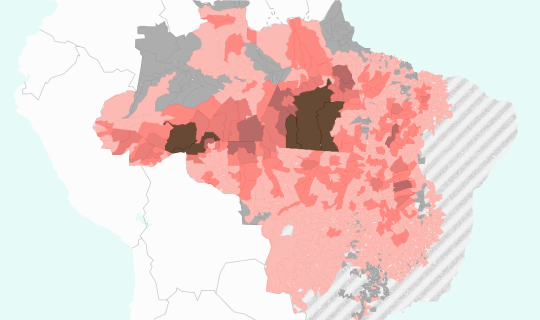Sourcing decisions can have a major impact on companies’ carbon footprints linked to purchases of forest-risk commodities like soy, palm oil and beef, Trase data show.
The deforestation frontiers for these commodities, where native vegetation is cleared to make way for new crop and pastureland, tend to be limited to a few hotspots within a producer country. Commodities produced in areas with the highest deforestation-related emissions can have much higher carbon footprints than those from areas with average level of emissions: 775% more for beef, 940% more for soy, and 630% more in the case of palm oil.
This high concentration – with large areas of production being associated with little or no deforestation – provides a clear entry point for action by buyers. They can dramatically reduce their deforestation-related carbon footprints by changing their sourcing patterns, or by engaging with suppliers or joining multi-stakeholder initiatives aimed at eliminating deforestation.
Was this article useful?




